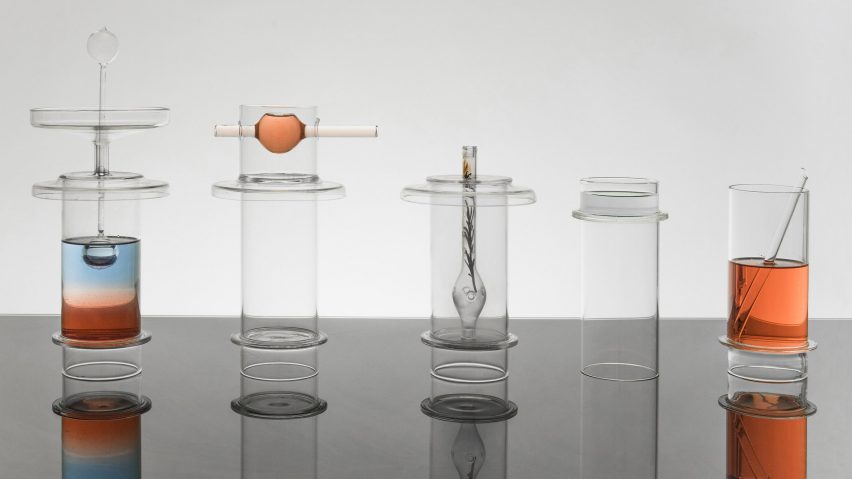
Emilien Jaury bases minimal cocktail set on traditional glassblowing techniques
ÉCAL graduate Emilien Jaury looked to the rotating motion used in traditional glassblowing methods when designing this collection of cocktail tools.
Jaury likened the motion of rotating a cylindric tube in the process of glassmaking to the movement of a bartender pouring a drink.
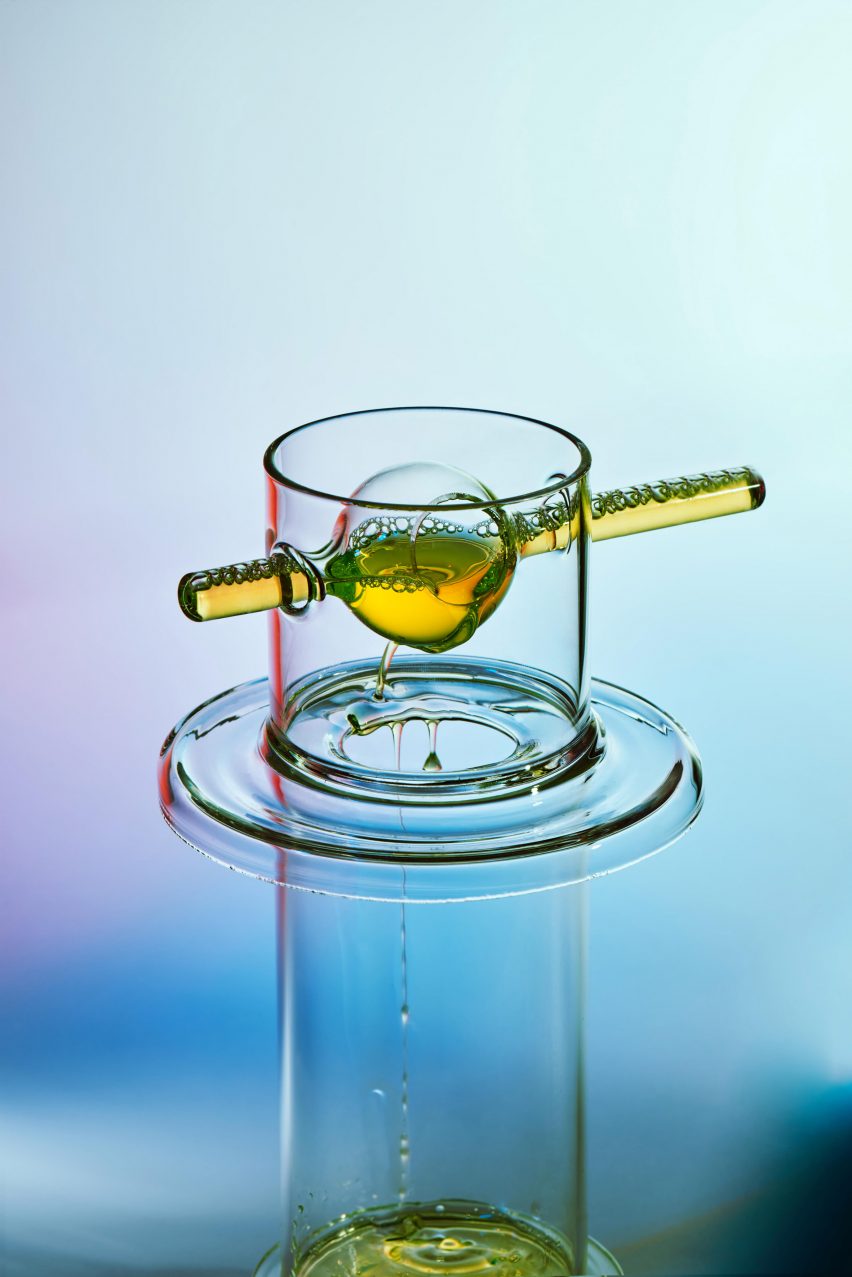
To replicate this, he created a series of tools made from glass tubes placed within bigger tubes, which each rotate individually when mixing drinks ingredients.
"The process of glassblowing and the craftsmanship that lies within it inspired me to design these pieces," Jaury told Dezeen.
"Viewing the glassblower's work and viewing the bartenders in their field, I quickly saw an interesting link in the actions of both in their everyday actions at work."
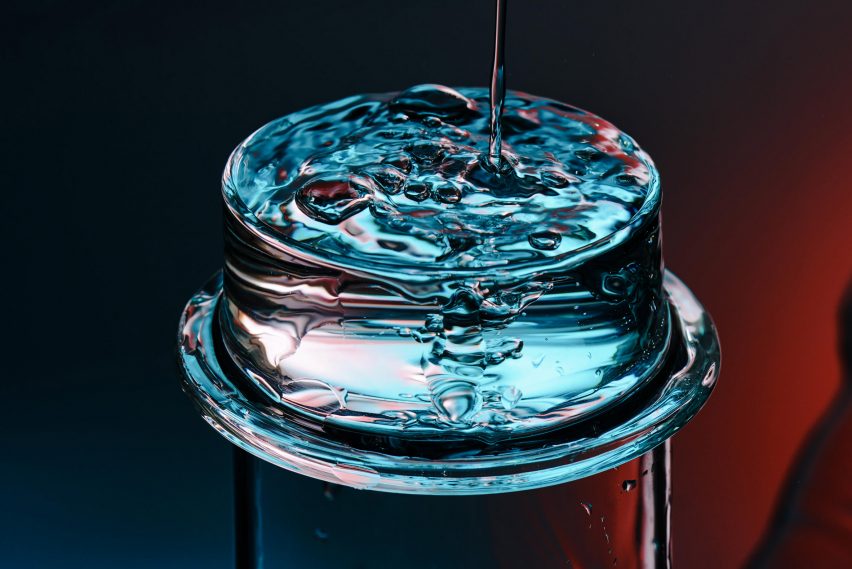
Called Witt, the collection includes a measuring tool, a glass, a straw, a smoker, a gradient and a mixing tool.
"The different tools are designed to fit perfectly on the glass and can either be used one after another or individually, depending on needs," he said.
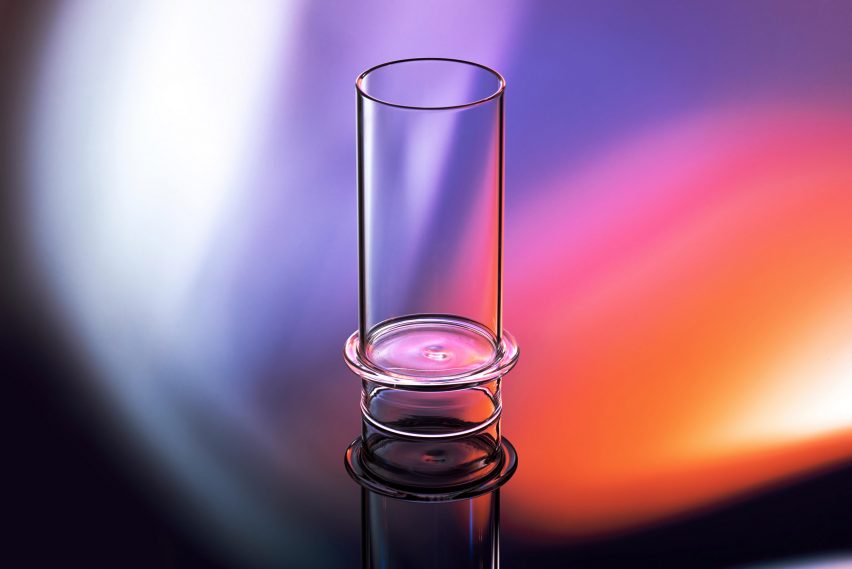
The measuring tool features two pieces of glass, one inside of the other. A small spherical implement, that holds 30 millimetres, the standard single measurement of alcohol – is positioned at the top of the container.
Liquid is poured into it through a circular hole, before being rotated via a handle to release it into the container.
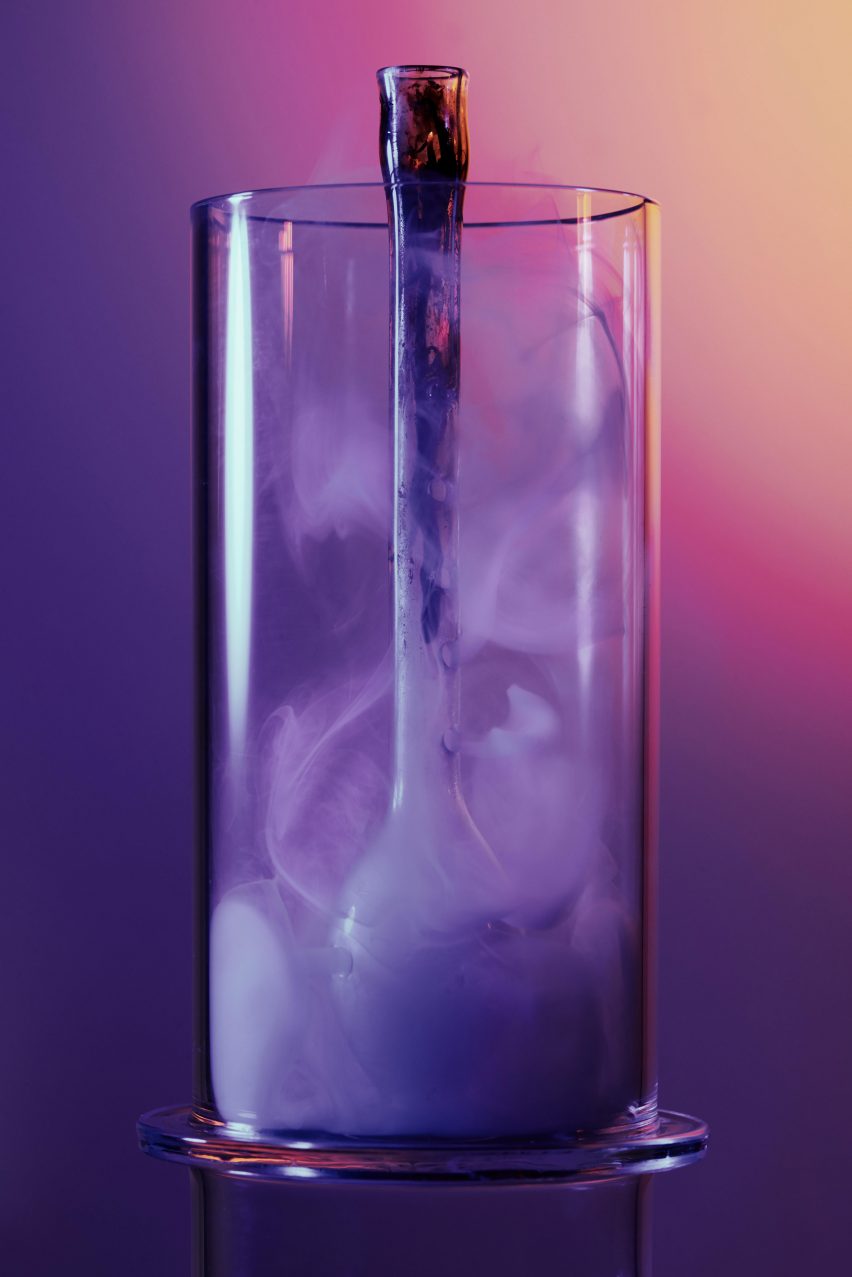
The glass can be used for both long drinks as well as a shallow-rimmed shot glass when turned upside down. It is completed with a straw.
The smoking tool is composed of a thin cylindrical tube with a bulbous diffuser. Aromatic ingredients, like herbs, are inserted into the tube and set alight.
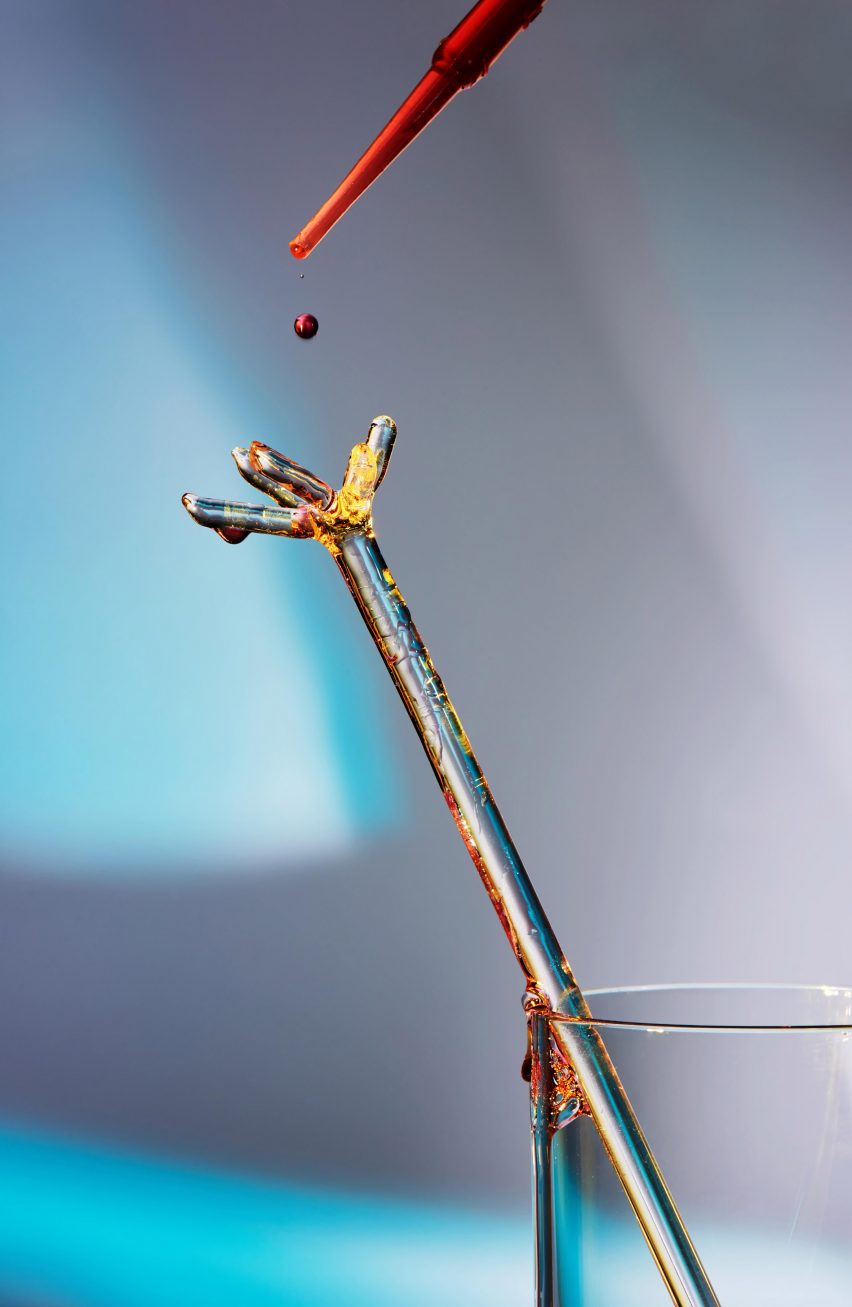
The smoke is then diffused from the belly of the implement via a series of holes into the cocktail glass.
The gradient is used to create layers of colour in cocktails. It is made from two pieces of glass that function by adhering to the bubbles in the liquid.
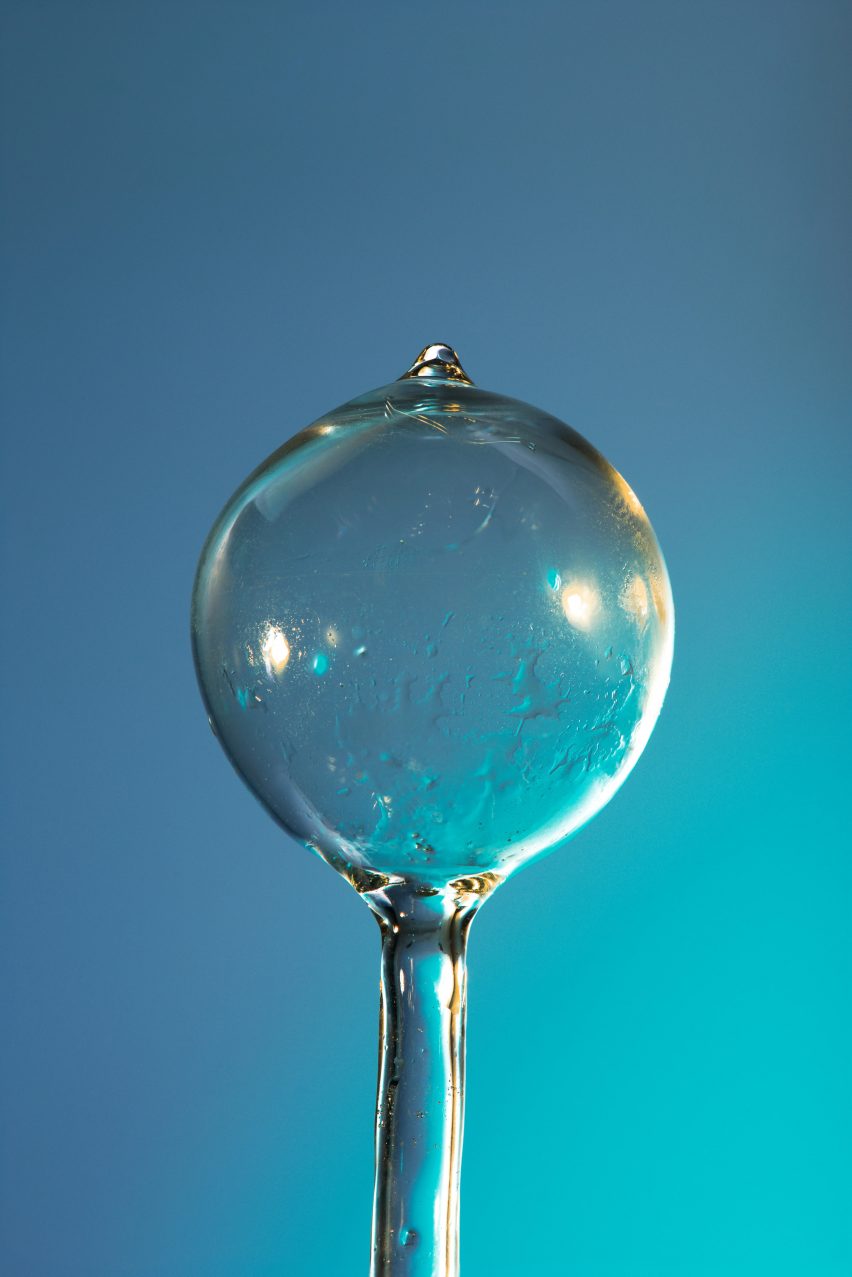
The collection is completed with a four-pronged mixing tool, also made from glass.
"Nothing is superfluous," said Jaury. "Each shape and volume has been calculated to answer a certain function."
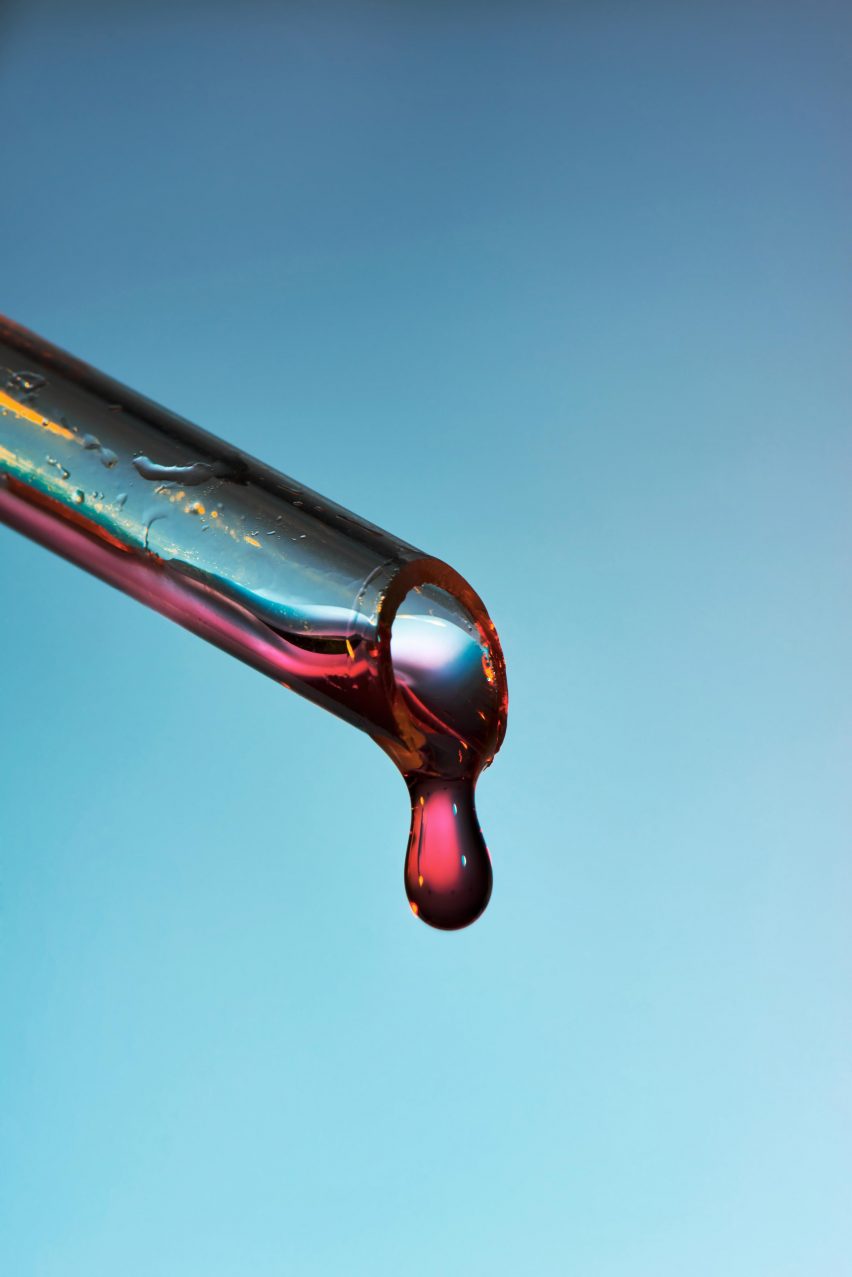
Last year, British designer Tom Dixon also experimented with glassblowing techniques, to create a range of laboratory-style glassware designed to make the process of preparing hot drinks look like alchemy.
Photography is by Joahnnes Bauer.